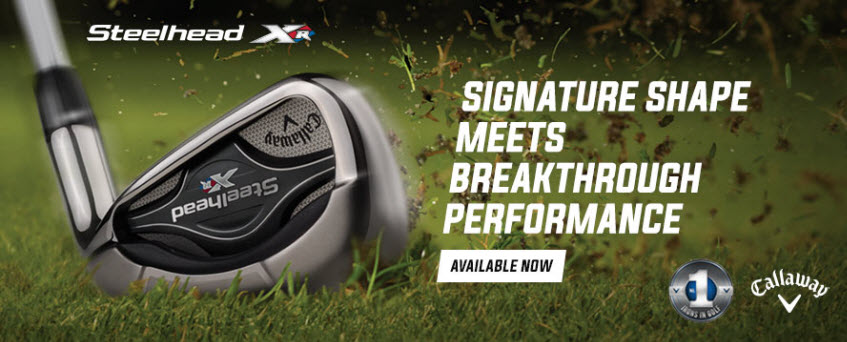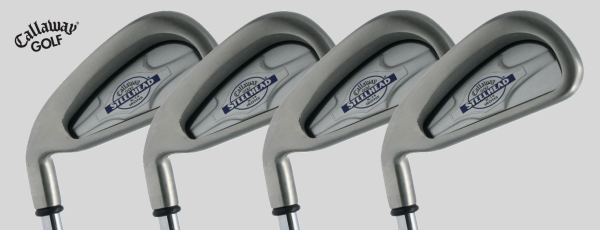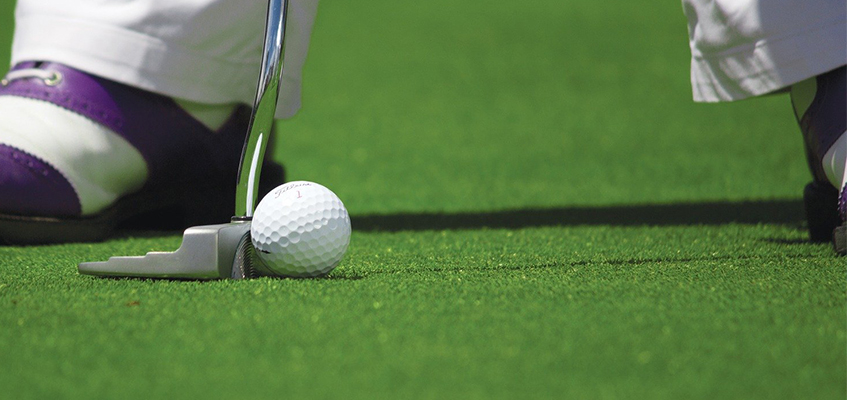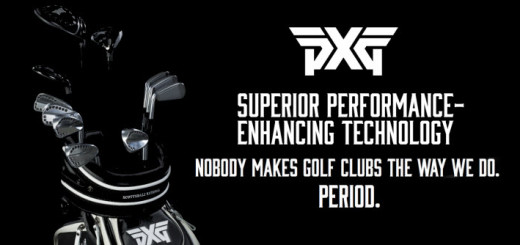New Product Launch: Callaway Steelhead XR Irons
Do you need any evidence that time flies? We’re so deep into the 21st century already that golf manufacturers are looking back with nostalgia to golf clubs introduced in years that started with a “20”. Witness the Callaway Steelhead XR irons that recently hit the late 2016 golf market.
The new generation of design wizards didn’t have to blaze an entirely new trail to create the Steelhead XR’s and instead harkened back to innovations from the past. Mostly they landed on the Steelhead X-14 from that long-ago time in 2000, with inspiration from the original X Series irons as well as the still-popular Apex and XR families.
A Bit of History
When the Steelhead X-14 arrived, it was a replacement for the popular Callaway Big Bertha line that launched the company into manufacturing prominence. Those Steelheads boasted a longer blade length with weight shaved from all the edges for a clean, rounded-off look all the way around the face. The bigger face and repositioned center of gravity bred improved performance on off-center strikes.
The Steelhead X-14s became one of Callaway’s best-sellers, even though the set cost rammed up against the upper reaches of affordability. In fact, back in the beginning of the century, a set of X-14s were aspirational clubs for many golfers hoping to reap the benefits of that enormous sweet spot. Even after many Callaway golf clubs came and went, golfers swore by their X-14s as the best clubs the company had ever made.
Building from a Not-too-Distant Past
To craft its new line of Steelhead XRs, Callaway started with the eye-pleasing shape of the X-14 irons and kept the company’s trademark massive cavity-back meant to tame mishits. From there, engineers adapted Callaway’s recent 360-degree Cup Face technology, which represents the brand’s latest innovations on iron performance.
Essentially, the clubface of the Callaway Steelhead XR irons wraps around the perimeter of the club. Think about how a trampoline is stretched around a tubular frame, where the effect is maximum spring in the center. The same principle applies to the clubface of the XRs, which deliver a dynamic effect to the center of the face. The results are so pronounced that the new XR irons bounce right up against the limits of USGA regulations.
Working with a thinner and faster face, Callaway was able to realize significant weight savings in building its clubheads. Designers then configured its Steelhead XR set to maximize performance from each club by putting that missing weight where it’s most needed. In the longer irons the weight sits low and centered to promote a higher ball flight, and in the shorter clubs, the weight is pushed up the face to send golf balls away with a lower, more controllable trajectory. The internal “standing wave” weighted pad also supports the frame of the face cup design, enhancing the flexibility of the face and controlling the location of the center of gravity.
Beyond the Numbers
So the Callaway Steelhead XRs wed the forgiveness of yesteryear’s X-14s with the pushing-the-limits-of-legality technology of 2016 for improved distance. This magic blend of old and new, plus dropping the loft of a 7-iron to that of a 6-iron of yore, produces all sorts of impressive-looking performance numbers for launch angles and spin rates – to those golfers who care about such things.
But the golfers in the market for a set of Callaway Steelhead XRs are not concerned with fancy numbers racing out to three figures behind a decimal point. They want a club that’s easy to hit and will generally go straight despite their best efforts to send it flying elsewhere – and the XR is that kind of player development club.





